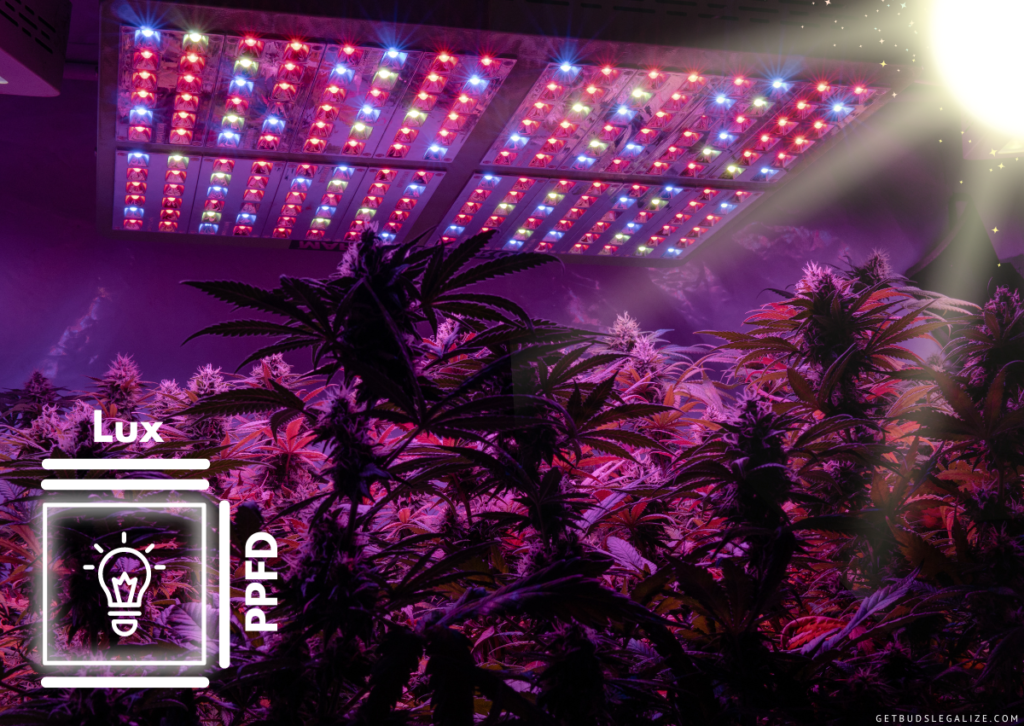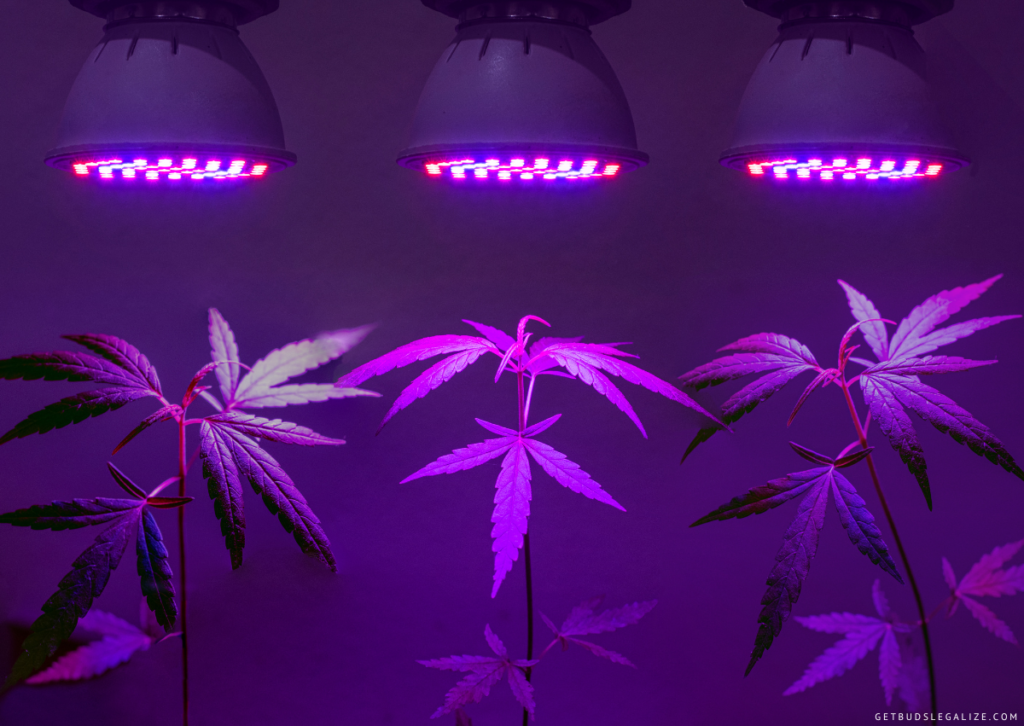How To Use A Lux Meter to Maximize The Yield Of Your Cannabis Plants!
If you want to grow cannabis indoors, you need to provide your plants with enough light to produce healthy buds. But how do you know when the light is enough? And what kind of light should you use?
In this blog post, we will explain how to use a lux meter to measure the amount of light your cannabis plants are getting, and how to adjust it to optimize your yields.
What Is a Lux Meter?
A lux meter is a light intensity measuring device. It is usually expressed in lux, the amount of lumens (a unit of luminous flux) per square meter. A lumen is the amount of light emitted by a standard candle in one second.
A lux meter can help you determine how much light your cannabis plants are receiving at different distances from the light source. This can help you adjust the height of your lights, or change the type or wattage of your bulbs, to provide your plants with the optimal amount of light for each stage of growth.
What Are The Differences Between Lux and PPFD?

Lux is a measure of visible light, which is what humans perceive with their eyes. However, plants do not use all the wavelengths of visible light equally. Plants mainly use red and blue light for photosynthesis, which is the process of converting light energy into chemical energy. Greenlight is mostly reflected by plants and has little effect on their growth.
PPFD stands for photosynthetic photon flux density, and it measures the number of photons (particles of light) in the photosynthetically active radiation (PAR) range that reach a given area per second. PAR is the range of wavelengths from 400 to 700 nanometers that plants use for photosynthesis. PPFD is expressed in micromoles per square meter per second (µmol/m2/s).
PPFD is a more accurate measure of how much light your plants are using for photosynthesis than lux. However, PPFD meters are more expensive and less common than lux meters. Also, PPFD values vary depending on the spectrum of your light source, as different types of lights emit different ratios of red, blue, and green light.
Therefore, if you are using a lux meter to measure the light, you need to know the conversion factor between lux and PPFD for your specific type of light.
For example, if you are using high-pressure sodium (HPS) lights, which emit mostly red and yellow light, you can multiply the lux value by 0.015 to get the approximate PPFD value. If you are using metal halide (MH) lights, which emit more blue and white light, you can multiply the lux value by 0.018 to get the approximate PPFD value.
What Are The Benefits of Using a Lux Meter?
Using a lux meter can help you improve your cannabis yields in several ways:
1. Helps to Increase Yield:
By measuring the light at different points in your grow space, you can ensure that all your plants are receiving enough light to grow optimally. You can also avoid over-lighting or under-lighting your plants, which can cause stress and reduce yield.
2. Tells You When You Need to Replace HID Grow Lights:
HID lights, such as HPS and MH, lose their brightness over time. This means that they produce less lumens and PPFD as they age. By using a lux meter, you can monitor the decline in light output and replace your bulbs when they reach about 70% of their original brightness.
3. Prevents Some Plant Problems:
By providing your plants with the right amount of light for each stage of growth, you can prevent some common plant problems caused by too much or too little light. For example, too much light can cause leaf burn, bleaching, or nutrient deficiencies. Too little light can cause stretching, weak stems, or low bud density.
What Is The Optimal Amount of Light that Cannabis Plants Need?

The optimal amount of light for cannabis plants depends on their stage of growth and their strain. Different strains have different light requirements, depending on their genetic origin and adaptation. Generally speaking, indica strains can tolerate lower light levels than sativa strains, as they are adapted to grow in regions with shorter days and less sunlight.
However, as a general guideline, you can use the following values for the optimal lux levels for cannabis plants at different stages:
- Seedling: 5,000-7,000 lux
- Cloning: 5,000-10,000 lux
- Vegetative: 15,000-50,000 lux
- Flowering: 45,000-70,000 lux
These values are based on using HID lights with a balanced spectrum. If you are using LED lights, which have a more focused spectrum and higher PPFD values, you may need to lower these values by about 20%.
How to Measure Light Intensity Using Lux Meter
To measure the amount of light your marijuana plants are getting, you need a lux meter and a tape measure. You can follow these steps to get an accurate reading:
1. Turn on your lights and let them warm up for about 15 minutes.
2. Place the lux meter sensor at the top of your plants, or at the height where you want to measure the light intensity.
3. Hold the lux meter horizontally and point it directly at the light source.
4. Read the lux value on the display and record it.
5. Repeat steps 2 to 4 for different points in your grow space, such as the center, the corners, and the edges.
6. Calculate the average lux value for your grow space by adding up all the readings and dividing by the number of readings.
7. Compare the average lux value with the optimal lux levels for your plants’ stage of growth and adjust your lights accordingly.
A Note About LED Grow Lights

If you are using LED lights, you may notice that your lux meter readings are lower than expected, even though your plants are growing well. This is because LED lights have a more focused spectrum and higher PPFD values than HID lights, which means that they deliver more photons to your plants per unit of visible light.
Therefore, if you are using LED lights, you may need to lower the optimal lux levels by about 20%. For example, if you are in the flowering stage, you may aim for 36,000–52,000 lux instead of 45,000–65,000 lux.
Alternatively, you can use a PPFD meter instead of a lux meter to measure the intensity of the light on your cannabis plants. A PPFD meter will give you a more accurate reading of how much light your plants are using for photosynthesis, regardless of the type or spectrum of your light.
However, PPFD meters are more expensive and less common than lux meters, so they may not be an option for everyone.
Now That You Know the Lux Meter Working Principle, All You Have To Do Is Try It!
To conclude, light meters are useful tools for cannabis growers who want to maximize their harvests. They allow you to measure the light intensity in your grow room and adjust your lighting system accordingly. By using light meters, you can ensure that your plants receive the right amount of light for each phase of their development. Happy growing!
FAQs about How to Use a Lux Meter
To calibrate light meters, you need to compare them with a reference source that has a known lux value. You can use natural sunlight or another calibrated lux meter as a reference source. You can also use online calculators or tables to find out the approximate lux value of natural sunlight at your location and time of day. To calibrate your lux meter, follow these steps:
- Turn on your lux meter and set it to the appropriate range (usually 0-2000 lux or 0-20,000 lux).
- Place your lux meter next to the reference source, facing the same direction and at the same distance.
- Adjust the dial or knob on your lux meter until the reading matches the reference value.
- Repeat this process for different ranges if your lux meter has multiple settings.
To measure the lux level of your grow light, you need to place your light meter directly under the light source, at the same height as your plant canopy. Make sure there are no obstructions or reflections that could affect the reading.
You can also use a grid or a tape measure to divide your growing area into equal sections and measure the lux level at each point. This will help you find out if there are any hot spots or dark areas in your grow space.
To use the light meter to increase cannabis yields, you must know the optimal lux range for each stage of your plant’s growth cycle. Generally, cannabis plants need more light during the vegetative and flowering stages than during the seedling and cloning stages.
You can use your lux meter to adjust your grow light’s height, intensity, and duration to achieve these ranges. You can also use your lux meter to monitor the light quality and efficiency of your grow light over time. If you notice a significant drop in the lux level, it may be time to replace your bulbs or upgrade your lighting system.
The price of a lux meter depends on its features, accuracy, and quality. You can find basic models for around $10-$20, but they may not be very reliable or accurate. More advanced models can cost up to $200-$300, but they offer more functions, such as data logging, spectral analysis, and wireless connectivity.
The measurement unit is the lux, which is defined as one lumen per square meter. A lumen is a measure of the total amount of visible light emitted by a source. The lux value indicates how much of that light reaches a surface at a certain distance from the source.
ILGM Fertilizer

- From seedling to harvest, give your plants everything they need.
- Enough for feeding at least 5 plants.
- Discounted Package Deal
- Works well in soil, hydroponics, and other growing mediums.
- The best way to treat your plants
ILGM Plant Protector

- Protect your cannabis from diseases and harmful pests.
- Contains three 20 ml bottles.
- Enough supplies to protect 20 plants.
- It can be used in soil, hydroponic, and all other growing mediums.

















